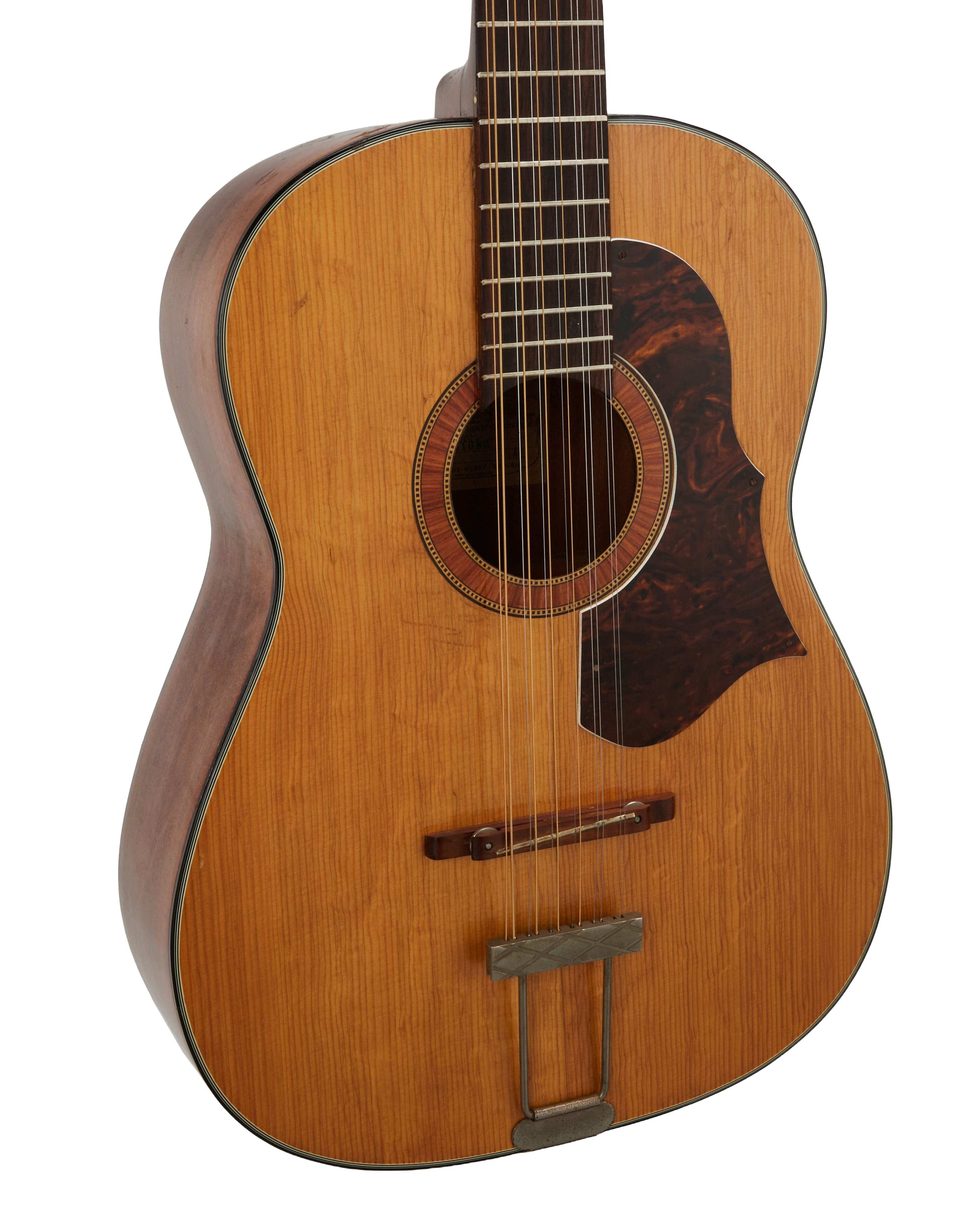Music
John Lennon's Lost Framus "Help!" Hootenanny
The Greatest Beatles Guitar to Come to Market
April 24, 2024
Everyone’s heard the story about a lucky person who stumbles upon long-forgotten treasure in an attic –– an heirloom with misunderstood value or a priceless antique gathering dust while grandma shouts up at the ladder, “What, that old thing?”
It’s a familiar tale because we all secretly hope to have such good fortune. It’s why so many of us eagerly sift through clothing racks at the thrift shop, and why the musty air of a cobweb-ridden attic smells of opportunity to the intrepid antiquarian.
Every freshly-opened box and blanket overturned is a chance at making that next big find, be it a charity shop Picasso, a yard sale film canister that turns out to be an rare original print, or an old guitar with a famous former owner that was hidden away for decades.
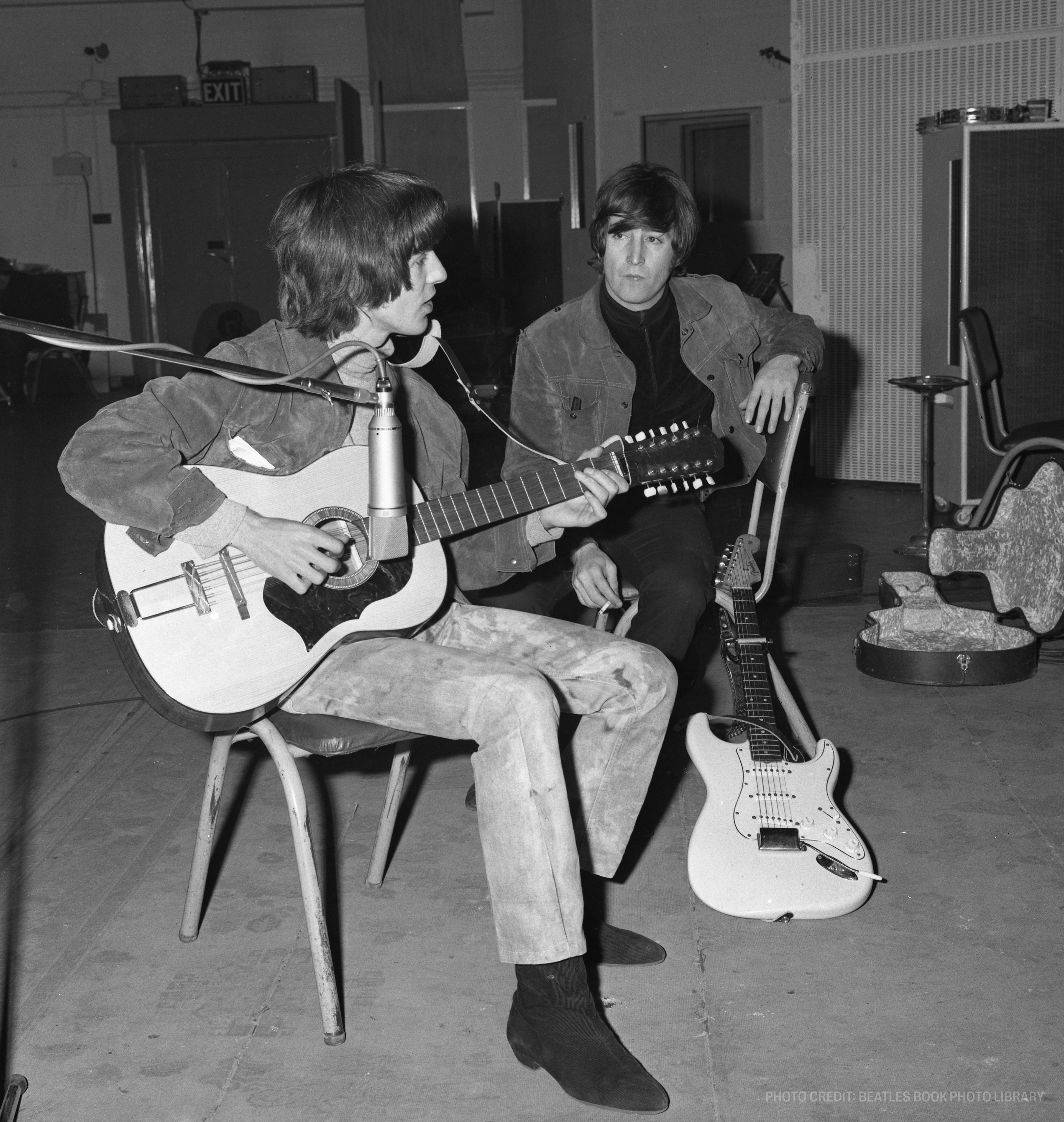
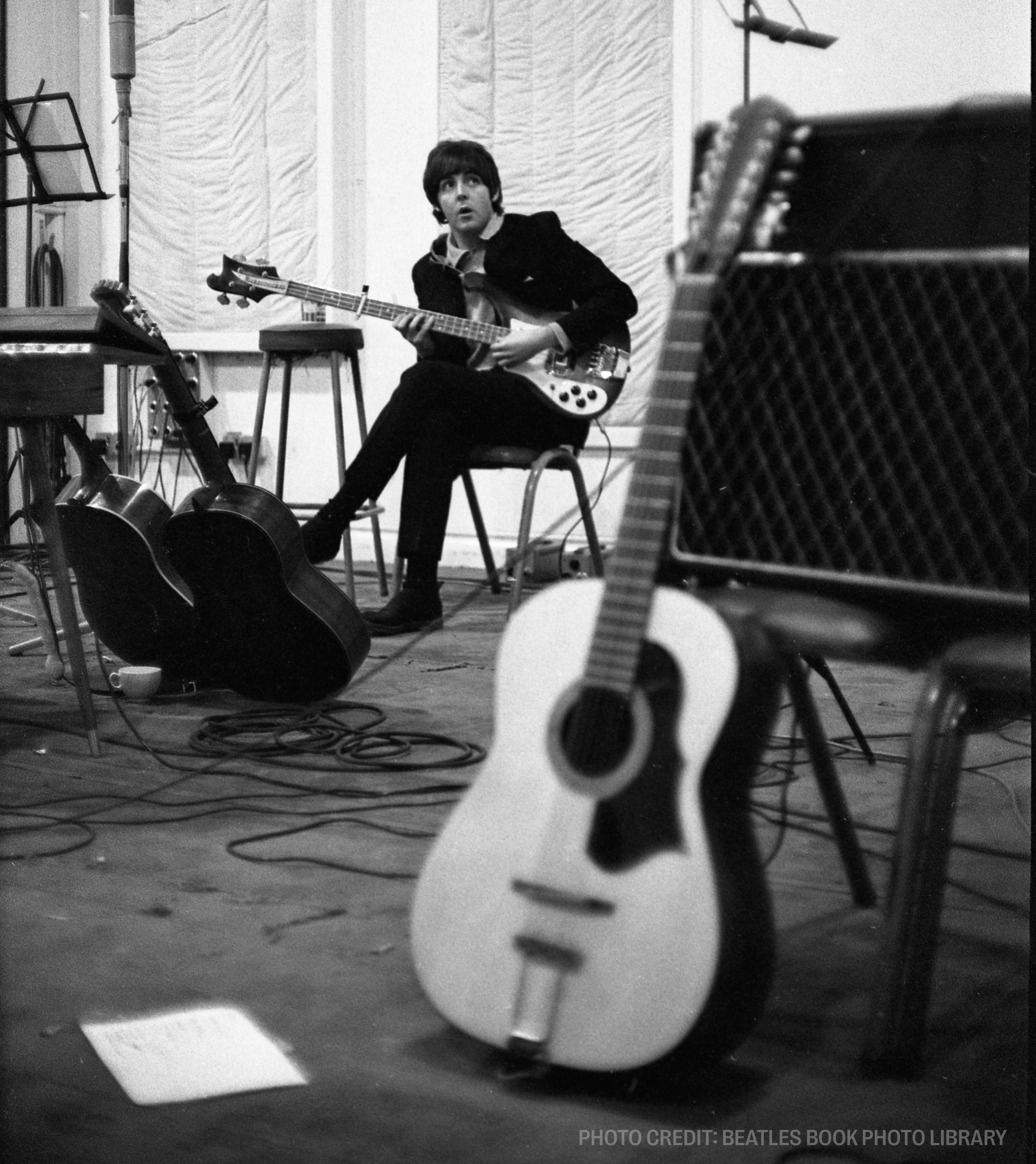
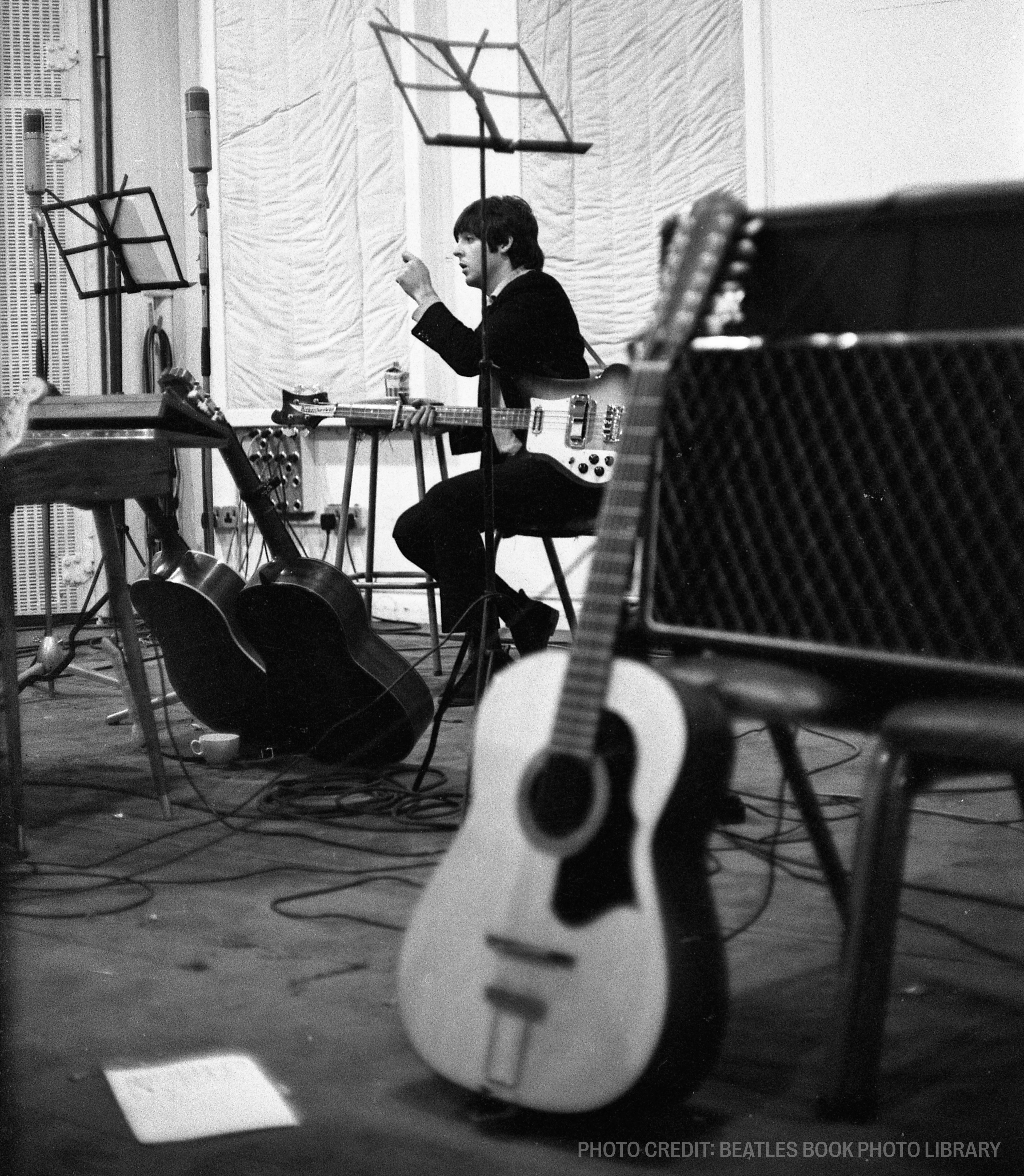
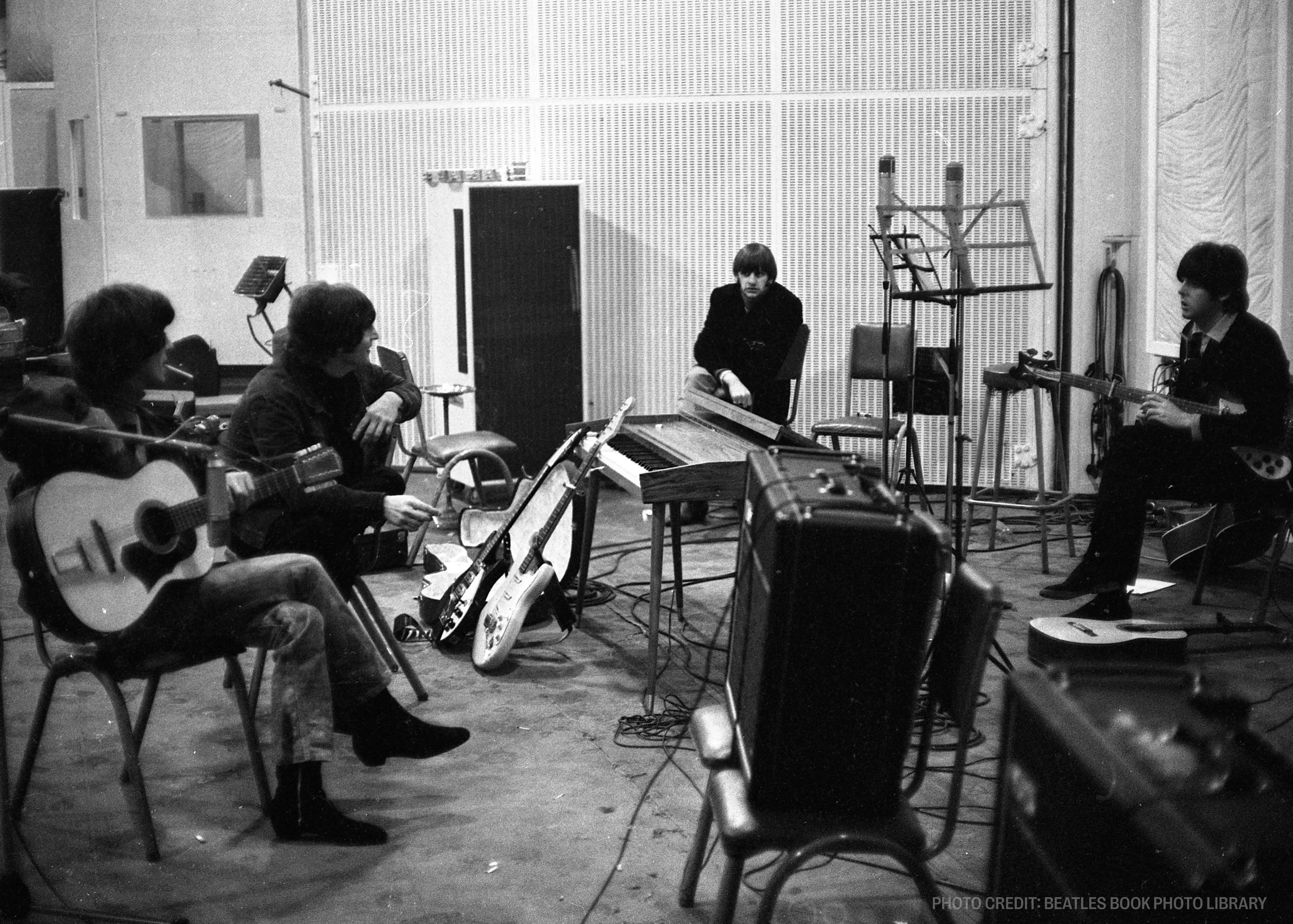
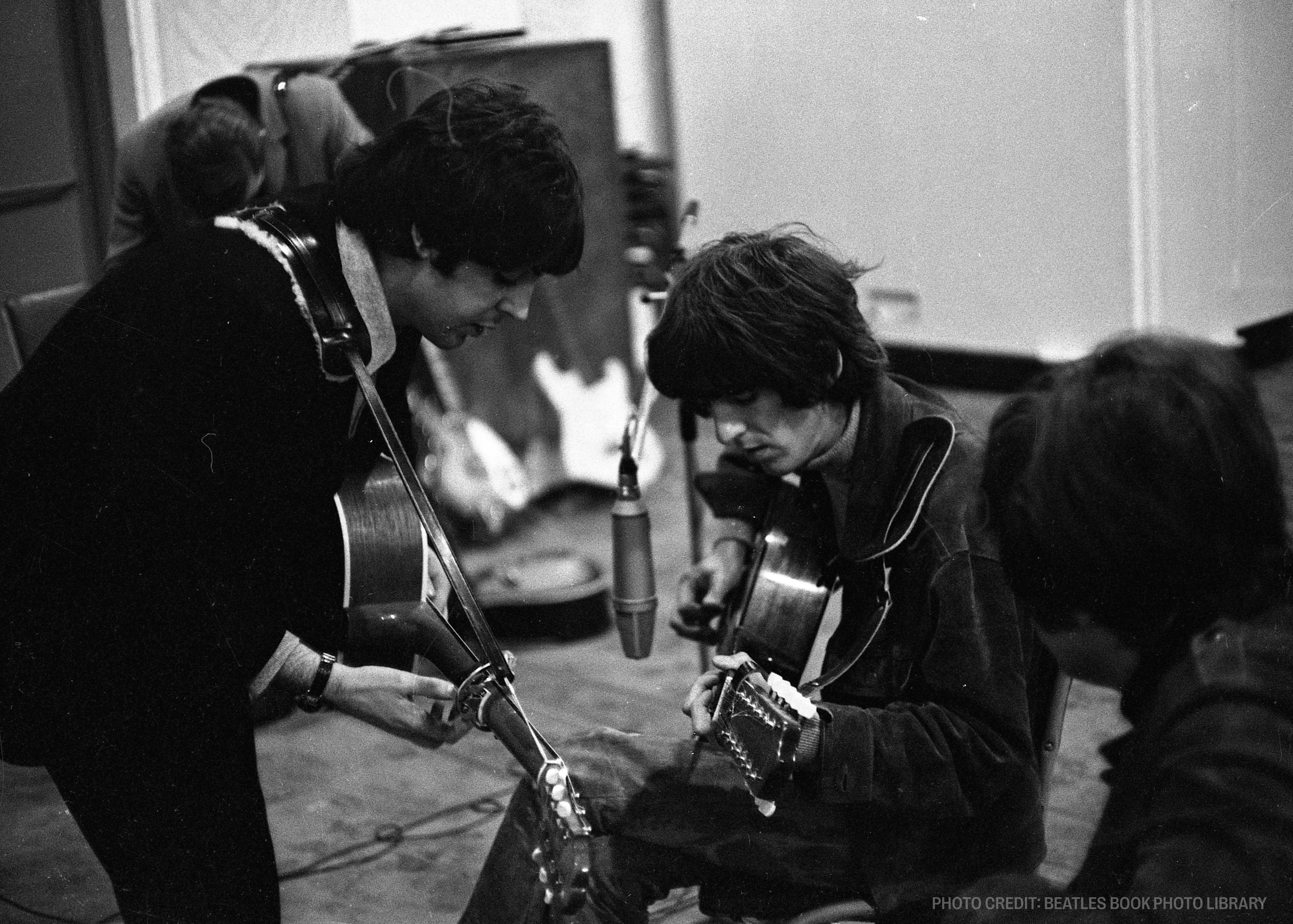
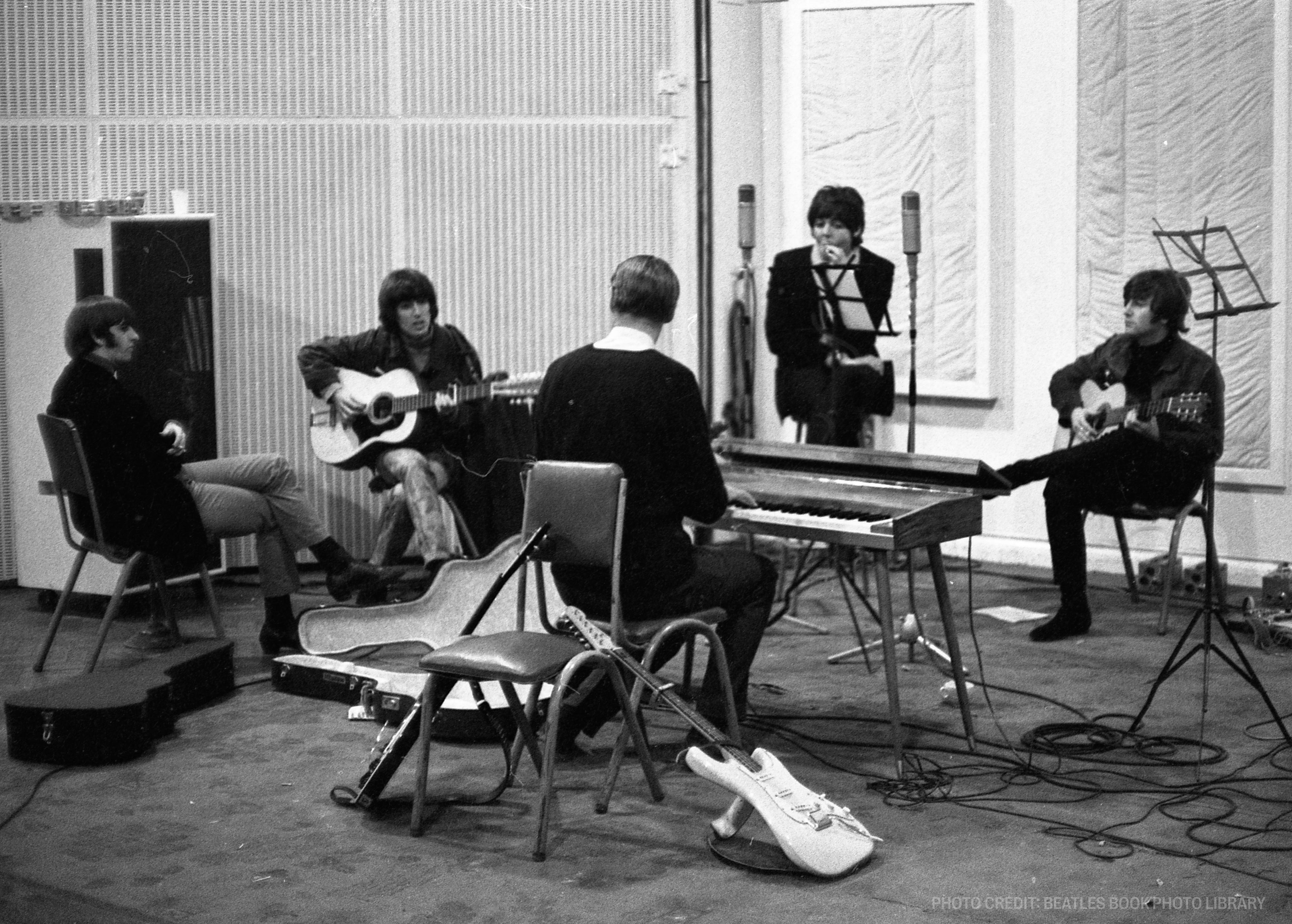
0 / 6
But a story is just a story
Throughout 1963 and 1964, The Beatles were in the midst of a meteoric rise. The band’s debut album Please Please Me dropped in March of 1963, topping the UK charts that May where it remained until dethroned by its successor With the Beatles. Then in ’64, The Beatles touched down on US soil for the first time in February, and made their historic television debut on the Ed Sullivan Show just two days later. That summer, the band embarked on their first world tour, with more shows and recording throughout the year.
In early ’65, sessions for Help! began, a record which would feature the songs “You’ve Got to Hide Your Love Away,” “It’s Only Love, and “I’ve Just Seen a Face,” and of course, “Help!” These songs have more in common than simply appearing on the same record: the sound of an acoustic 12-string guitar, played at times by both John and George.
Now imagine that it’s present-day. You’re digging through the attic where you find an old guitar case. You brush it off and see a brand name: Maton. Inside the case is a 12-string acoustic guitar, but it says Framus on the headstock. It’s out of tune and it looks like it’s been up here forever. You ask what it’s doing up in the attic, and a voice responds, “Oh, that’s John’s.”
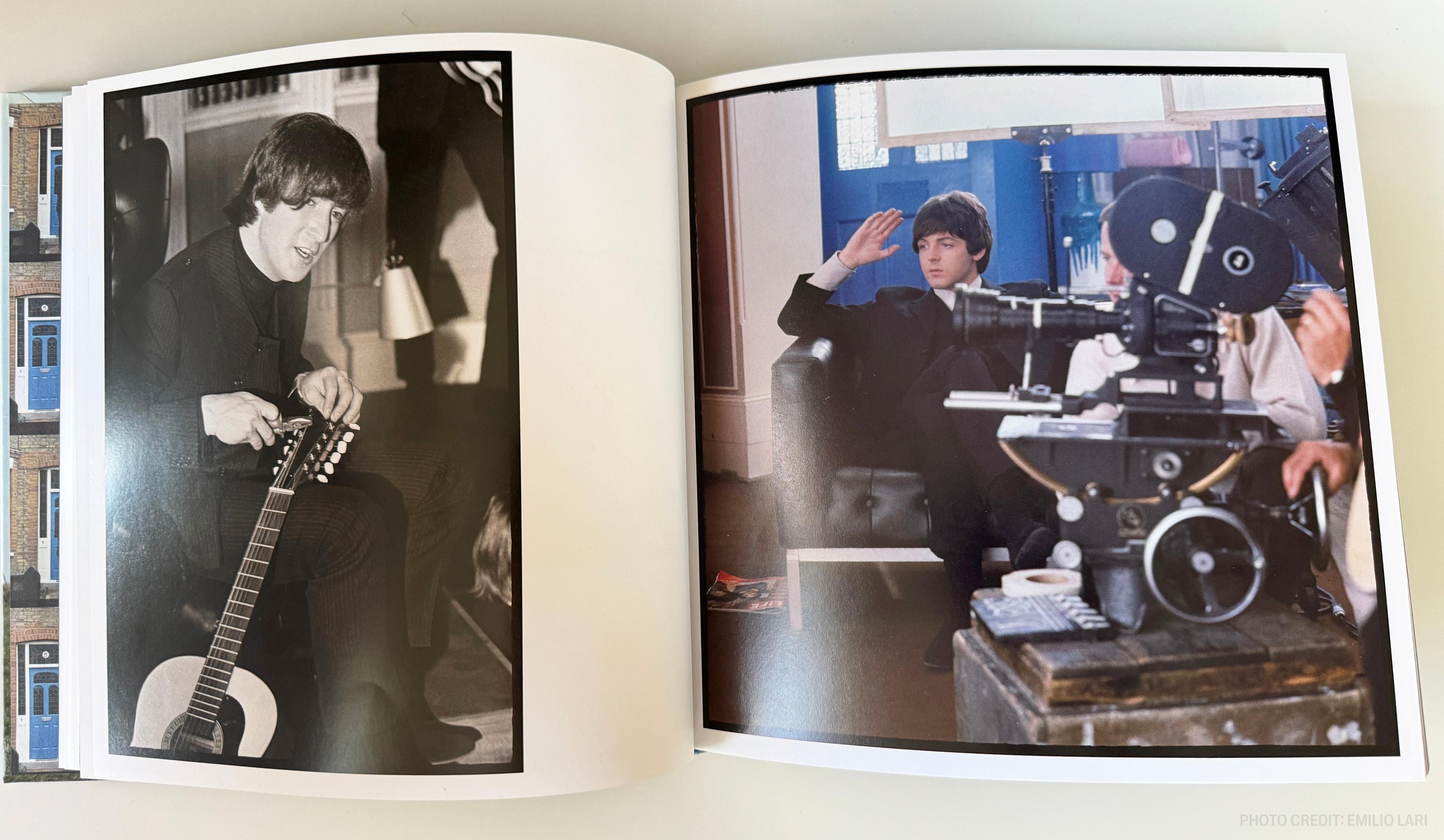
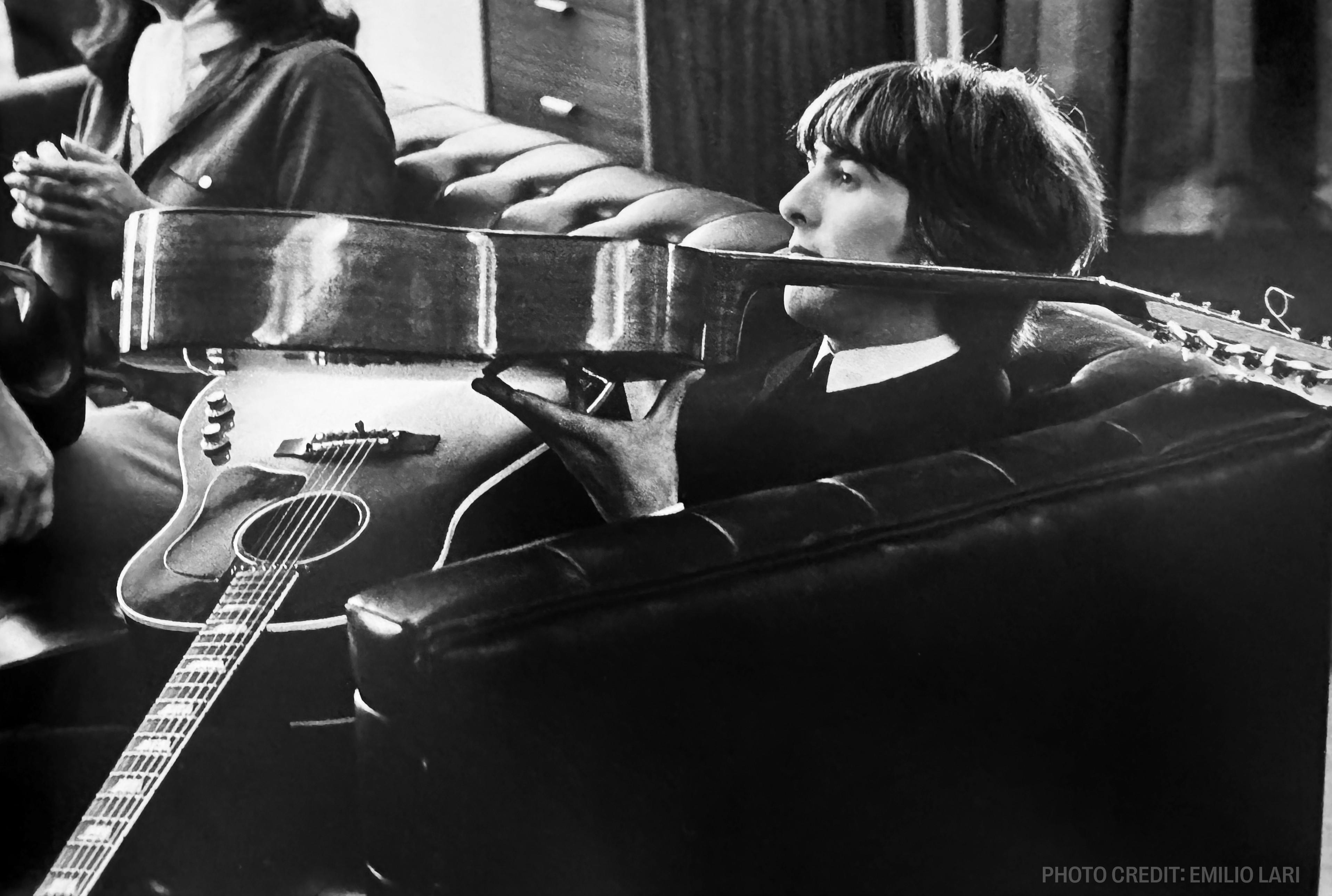
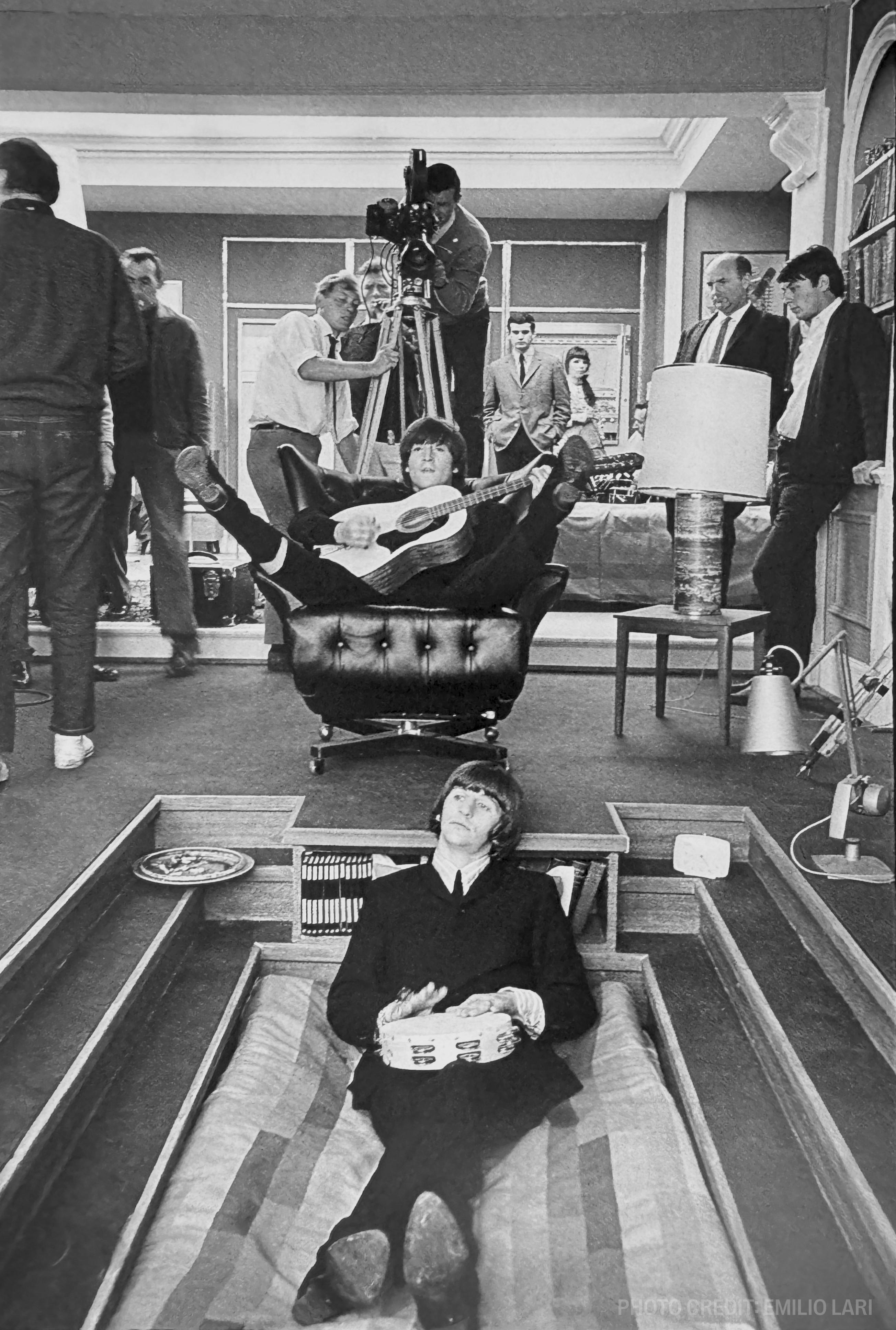
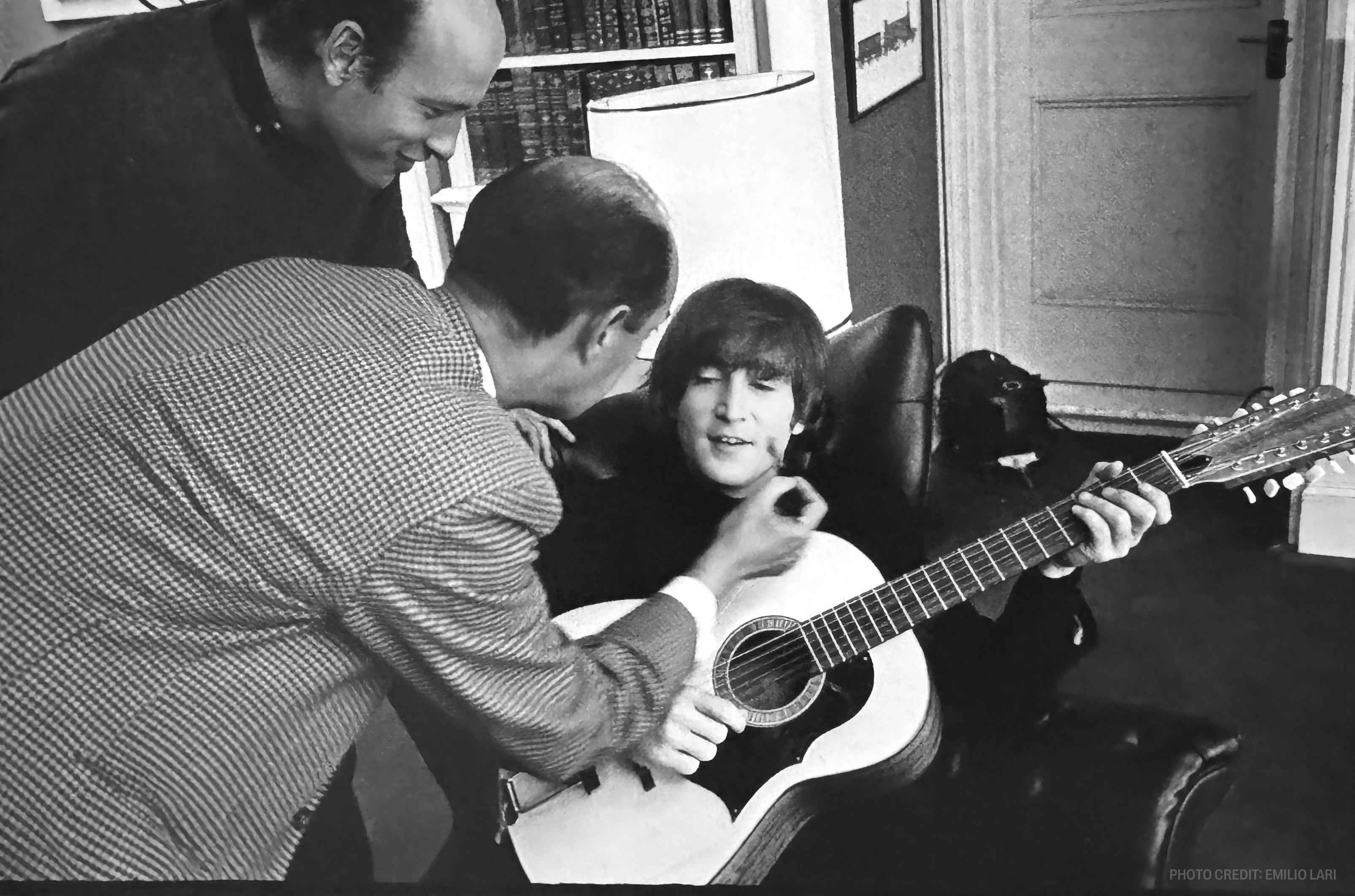
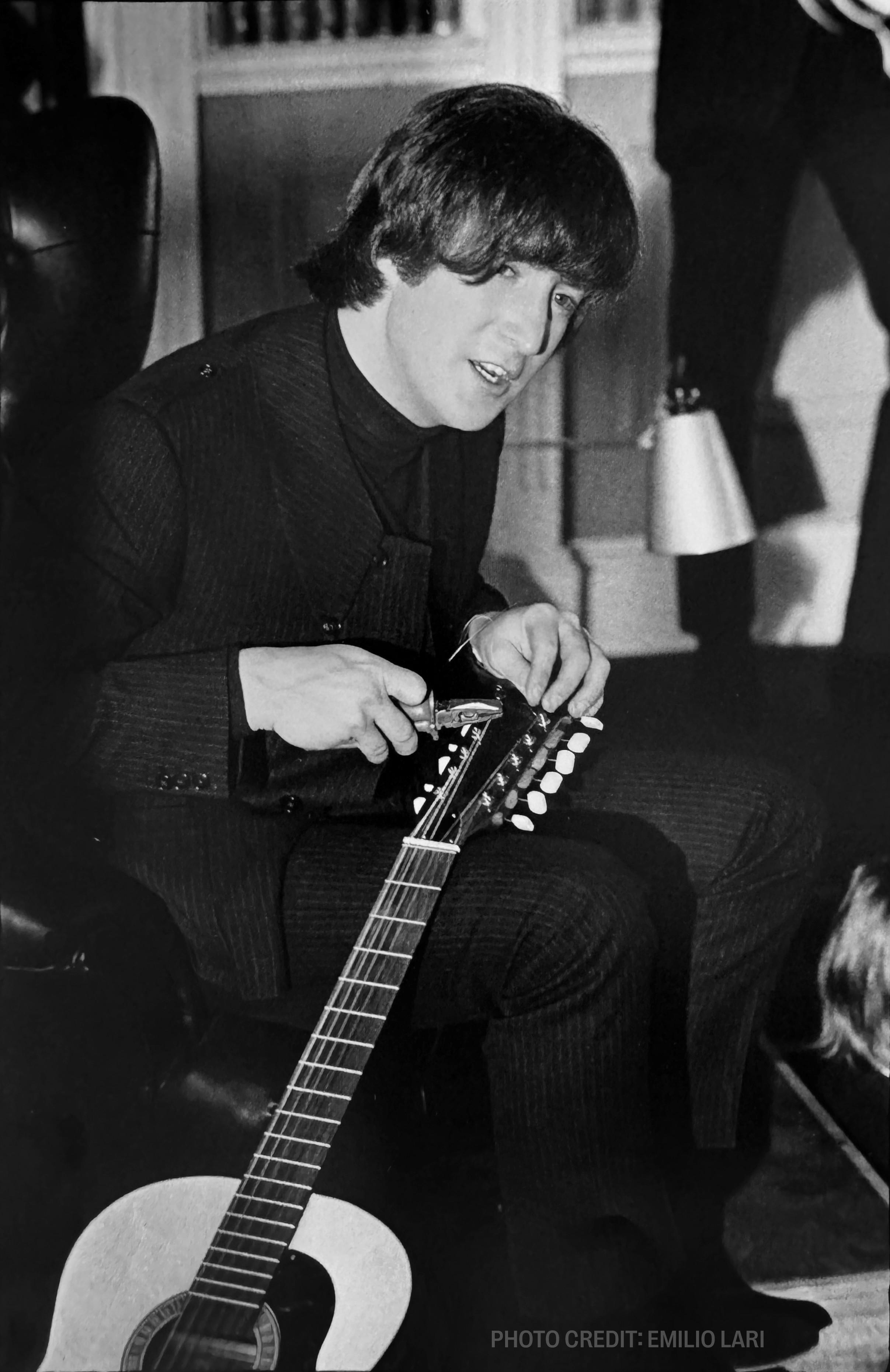
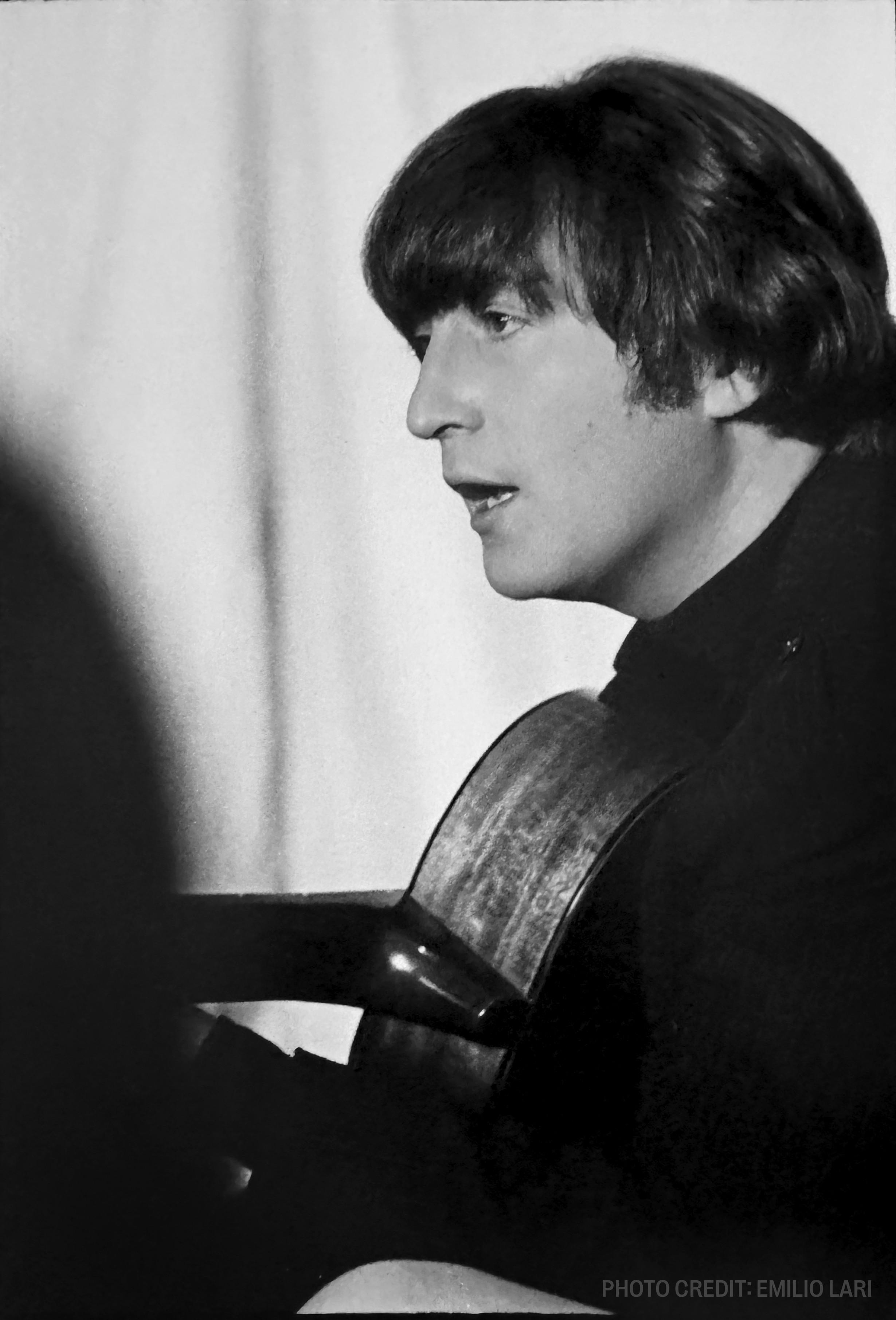
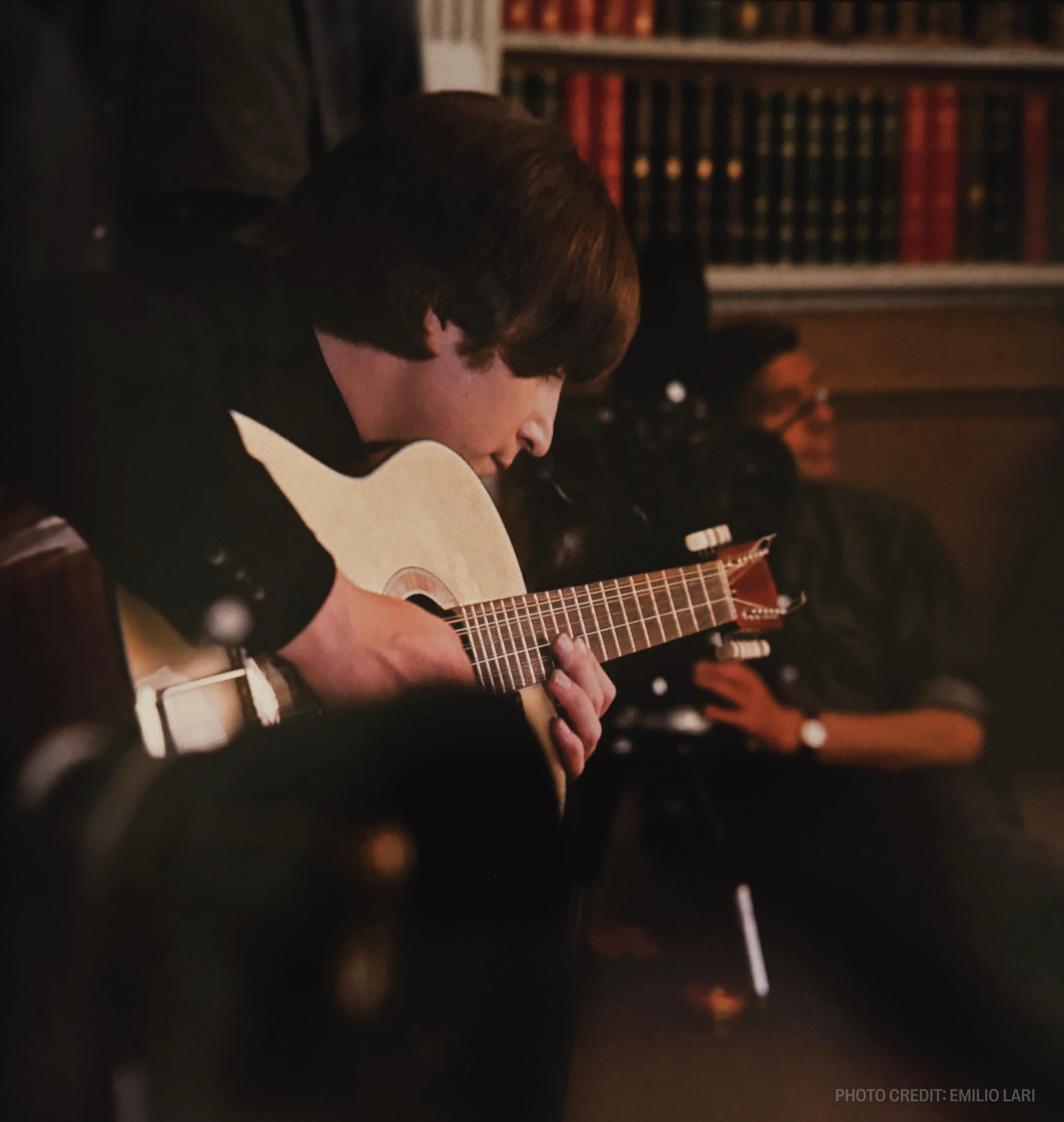
0 / 7
'The Beatles: Photographs from the Set of Help!' accompanies guitar
But a story is just a story, right?
The Framus “Hootenanny” 5/024 12 was a 12-string acoustic guitar made in the company’s Bubenruth, Bavaria factory in the early 1960s. In the UK, it could be found in catalogs for a price of 34 Guineas, and it featured a spruce top, mahogany back and sides, a set mahogany neck, a 19-fret rosewood fretboard, and a decorative sound hole rosette made of individually-inlaid pieces of wood.
In the vein of Framus and other maker’s archtop jazz guitars, this acoustic wears a trapeze tailpiece and floating bridge instead of the usual fixed bridge base found on most acoustics. This likely contributes to the Hootenanny’s unique sound, which is warm and lacking in midrange, yet surprisingly loud.
John Lennon acquired the Framus Hootenanny in late 1964, and made its recording debut during the 1965 Help! sessions where it was photographed in the hands of both Lennon and Harrison along with the Maton case it was originally paired with at the store. “Fifth Beatle” producer George Martin’s handwritten notes from those sessions record that the Hootenanny was used by both Lennon and Harrison on “You’ve Got to Hide Your Love Away.”
We also hear it in “Help!” outtakes, where John can be heard tuning the guitar before he starts playing. There’s also “Girl” from Rubber Soul, and it’s the guitar George Harrison used for his parts on “Norwegian Wood (This Bird Has Flown).” This is the guitar seen in Beatles Monthly photos, and played by John in the movie Help!when The Beatles perform ‘You’ve Got To Hide Your Love Away’. It’s been passed around from Beatle to Beatle and etched in history and vinyl alike in songs that have carried us for nearly 60 years.
A story is just a story, except when it’s true. This Framus guitar is the treasure we found in an attic, uncovered after decades in storage.
At the end of 1965, John Lennon gave the guitar as a gift to Gordon Waller of Peter & Gordon, for whom Lennon and McCartney had been writing songs. Later, Waller would pass the guitar on to a manager of his, who took the guitar home, tossed it in the attic, and gave it nary a thought for decades.
We worked closely with musician, author, and Beatles Gear expert Andy Babiuk to confirm that this Hootenanny, serial #51083, is indeed John Lennon’s guitar. It has some distinctive markings which made it easily identifiable when compared with studio session photos as well as its scenes from Help! These markings include the darker patches in the pattern of the rosette, telltale wood grain on the top, and the swirl of the tortoise shell pickguard material.
With the Hootenanny, the real proof is in the sound. When strummed, it immediately identifies itself as “that” guitar. If you know the chords, Beatles tunes fall out of the sound hole effortlessly. Like an audio time capsule from 1965, the Framus is a direct link to those records.
This historic instrument still retains the Maton case seen with it in recording room photographs, its brown exterior clearly worn from having done its job so dutifully over the years. Inside, the crushed yellow velvet looks just like the color photos from the Rubber Soul sessions, its exterior badge catching the light just so. There’s also an interior dealer tag that can be seen in the photo that matches perfectly.
Missing for nearly 60 years, thought to be lost for good, now brought to Julien’s and restored to proper playing condition so that this historic instrument can make music once again.
Condition
An attic is one of the worst places to store a guitar, a part of the home usually less protected from wild swings in heat and humidity, where moisture tends to creep in and do its dirty work at the expense of whatever precious items are kept there. Guitars prefer much more stable environments where humidity is between 40 and 45%, and where the temperature is neither very hot nor very cold; cased and kept in a closet is almost always better for the instrument.
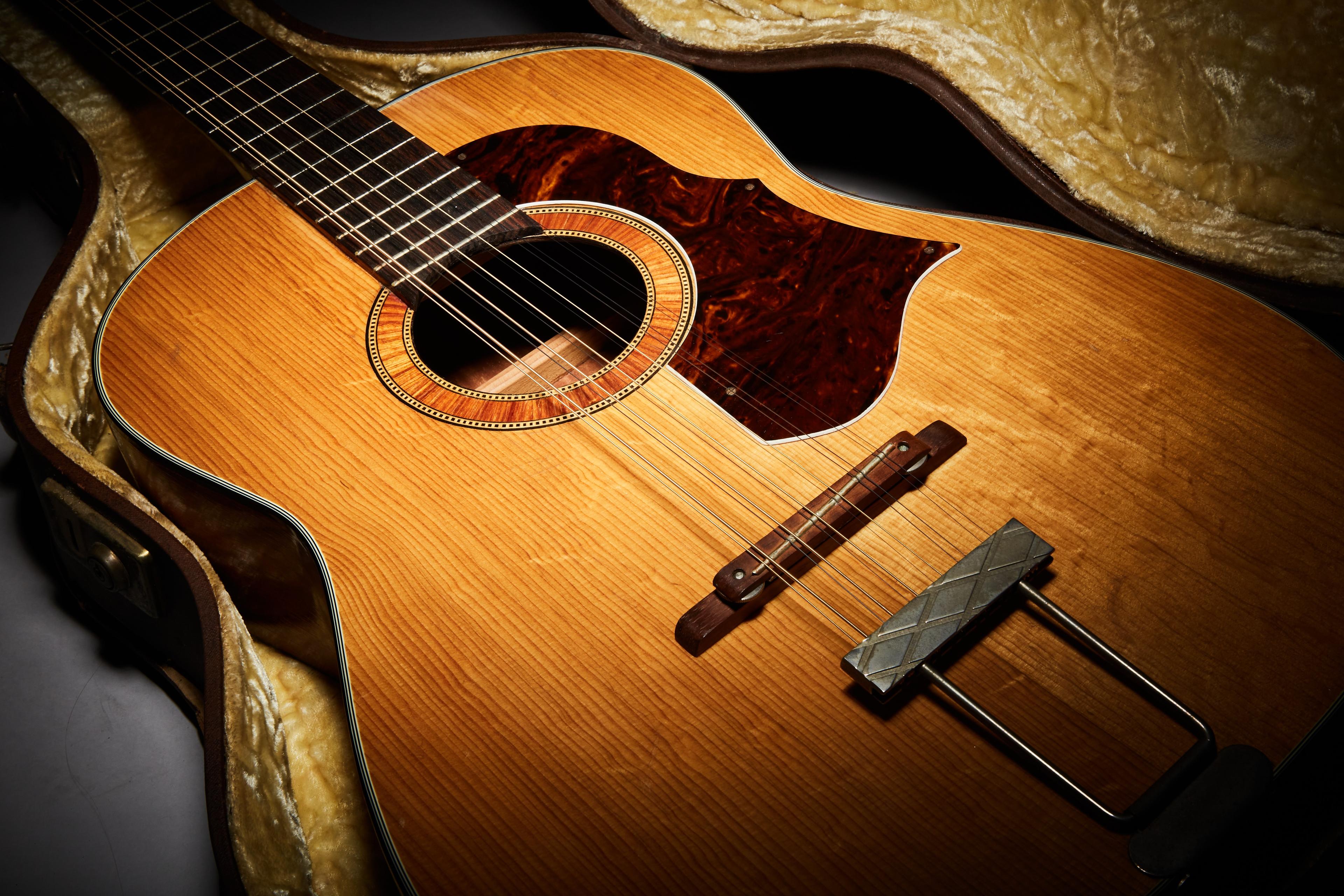
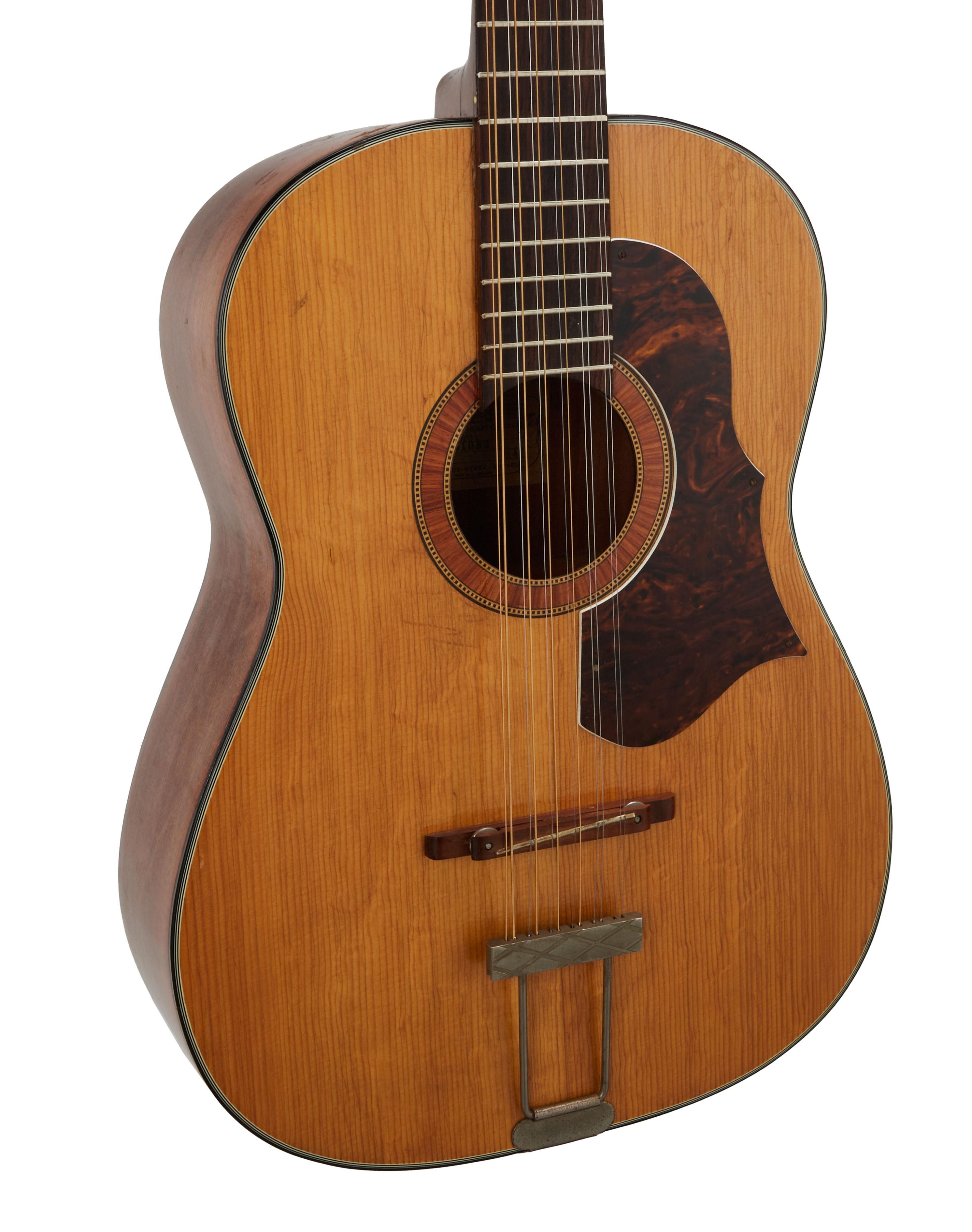
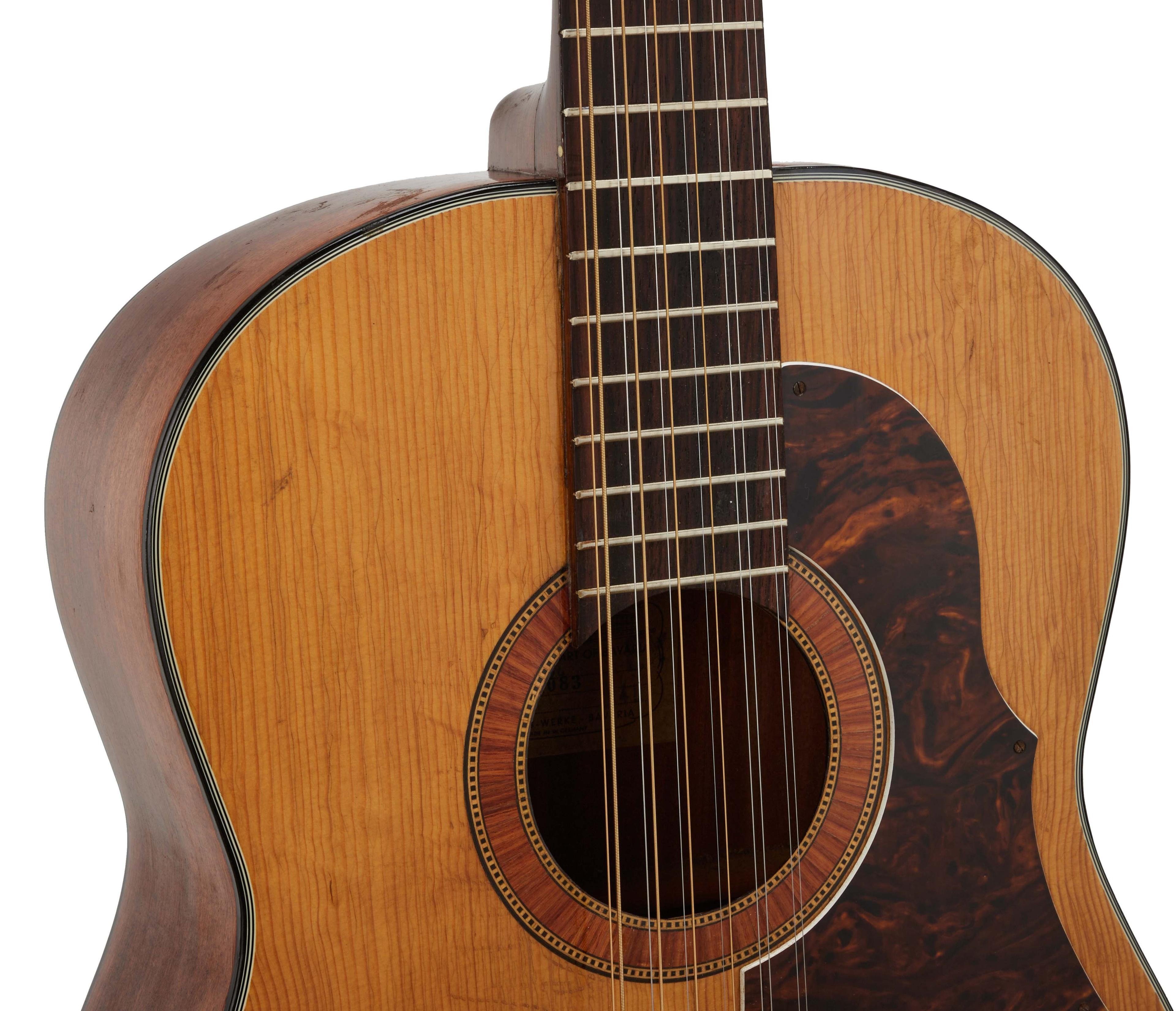
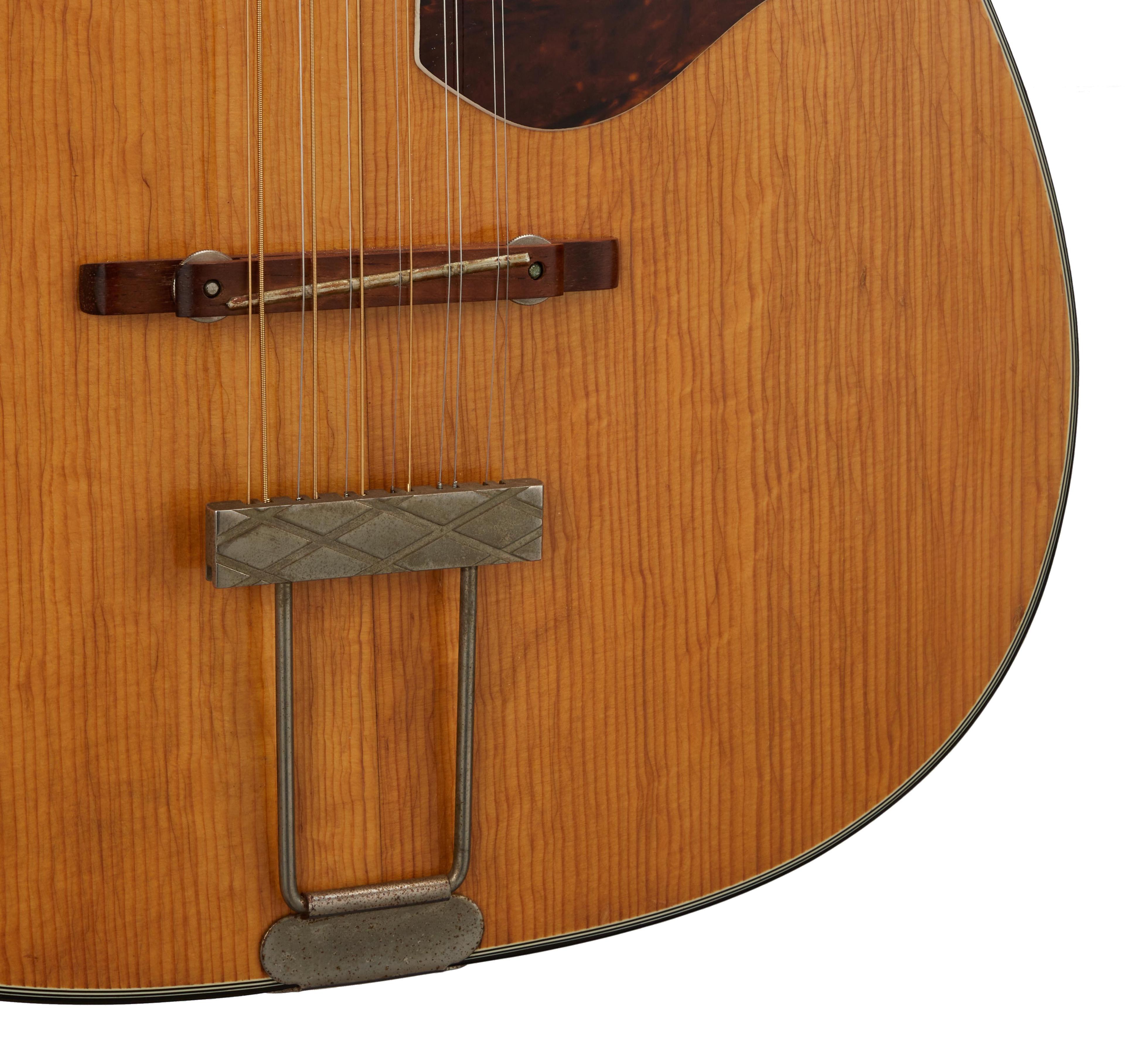
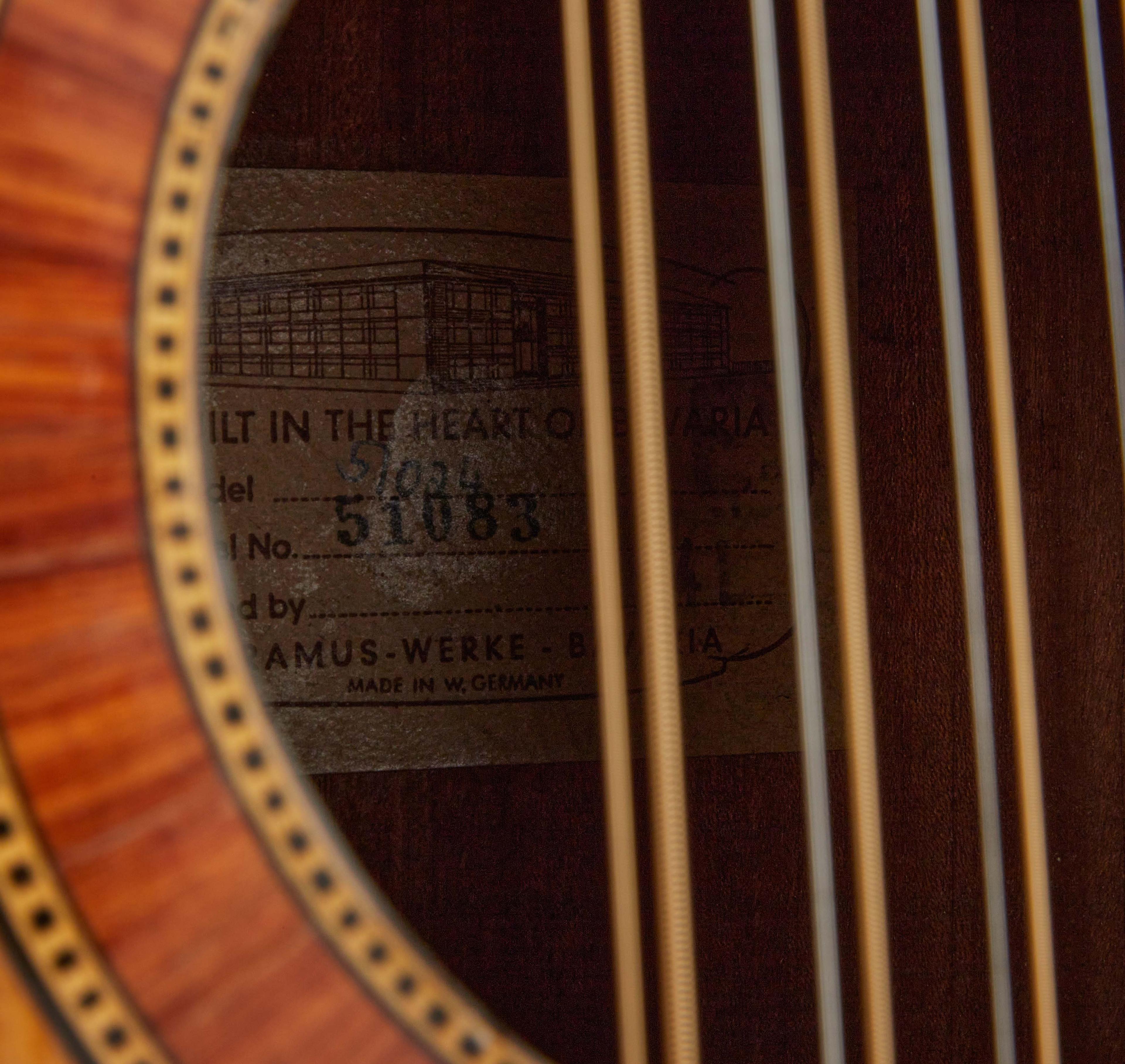
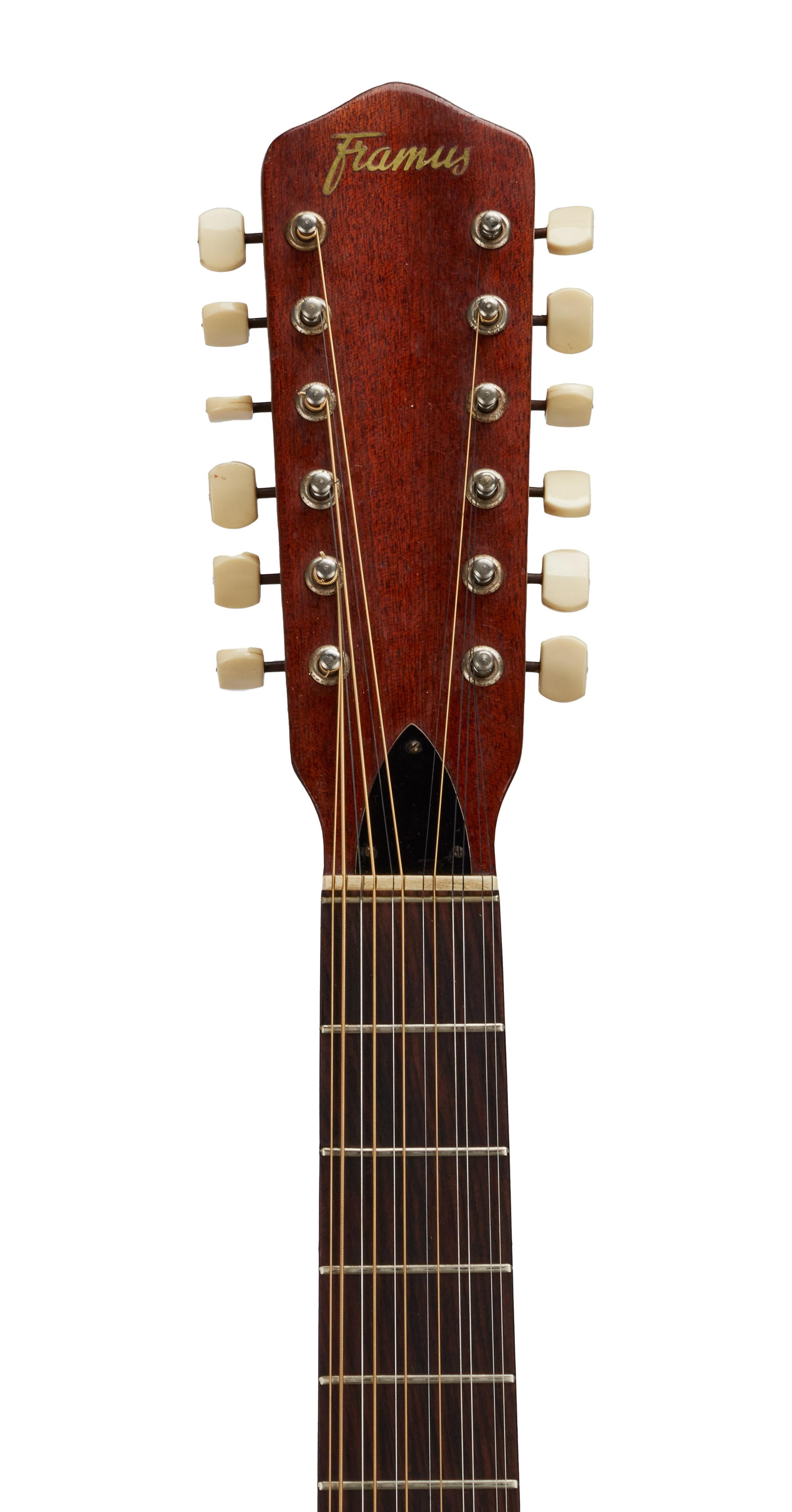
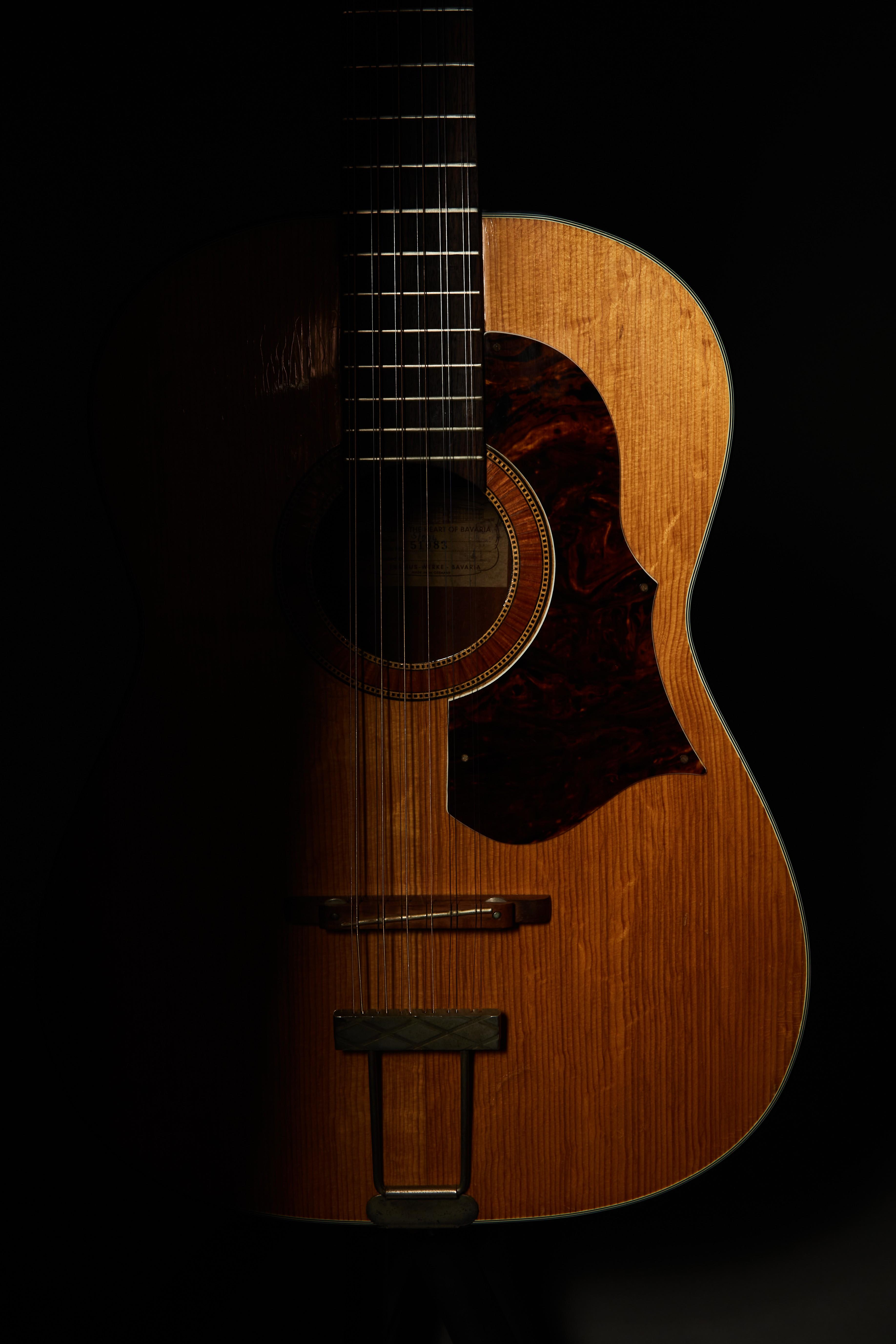
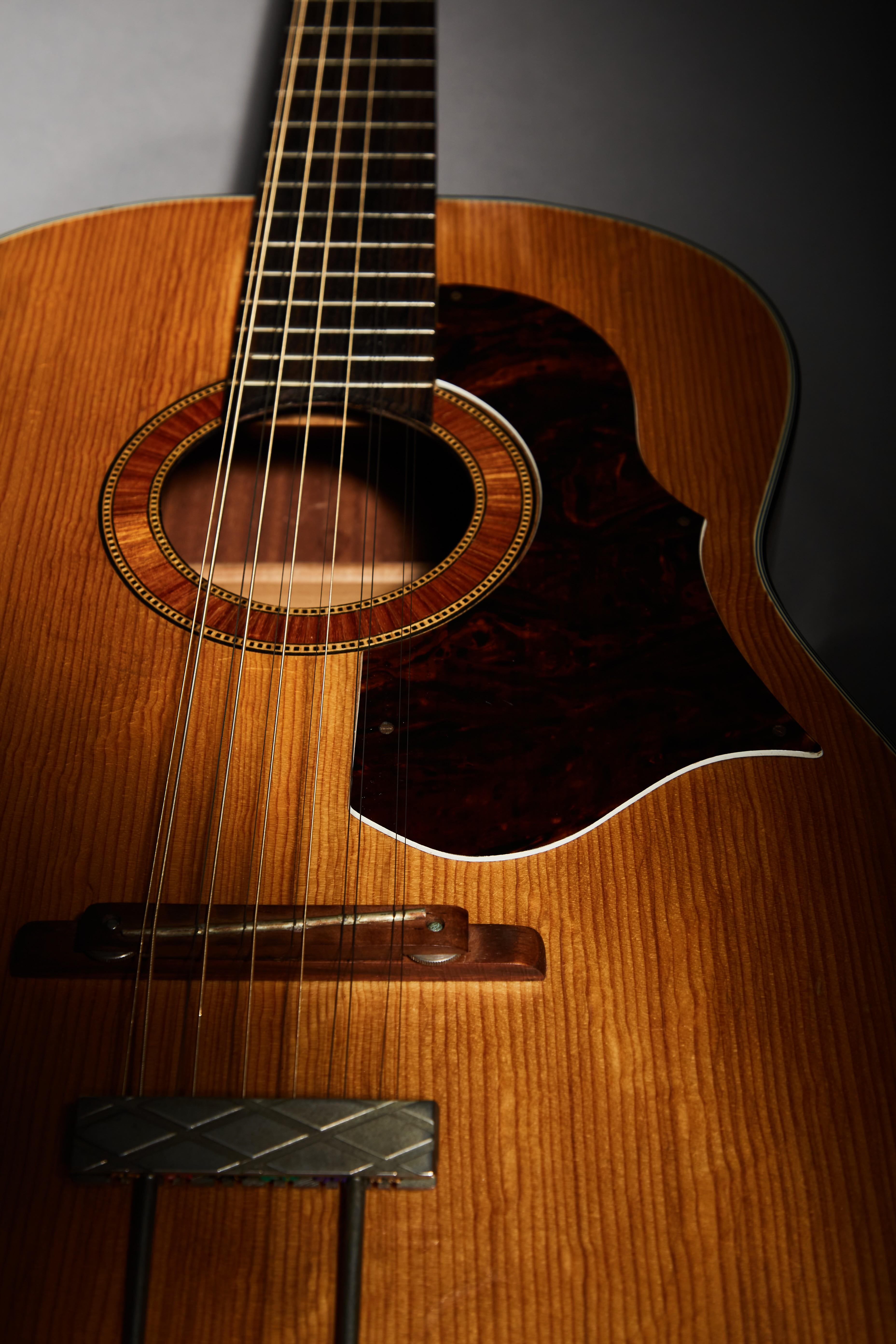
0 / 8
Decades of cycles from hot to cold, damp to dry, were not kind to the Framus. The frets corroded, the finish checked, the top seam retracted, the bridge bent from string pressure, and the neck joint loosened to the point where the guitar could not safely be played. When it arrived in Los Angeles, our guitar specialist evaluated the state of the Hootenanny and made the following recommendation: if the guitar is to be sold as a functional, playable instrument, it would need to be repaired.
We had a choice to make. We could sell it as a Beatles artifact meant only for display, or we could put in the work to make this into a functional and playable musical instrument. At the end of the day, we saw no other way forward: Musical instruments are meant to make music, and a guitar of such importance to music history deserves to be made whole.
For this task, we could think of no-one better suited for the job than Ryan Schuermann of LA Guitar Repair. Ryan is a luthier’s luthier and came highly recommended by every guitar repair expert we spoke to in the city.
Over the course of four weeks, Ryan worked miracle after miracle. He performed a masterful neck reset that’snearly undetectable, a beautiful repair of the top, steam and heat treatment of the bridge plus a removable shim underneath for stability, all to ensure the Hootenanny would be playable not just for now, but for decades to come.
With all of this intensive repair work, we have given the guitar back its voice without fundamentally changing what it is. The best part is that the guitar is not only playable, it may now be the easiest-playing 12 string acoustic guitar on the planet –– at least in the humble opinion of our guitar specialist.
It’s not just about discovery. It’s also about preserving the legacy of a truly exceptional, storied guitar.
